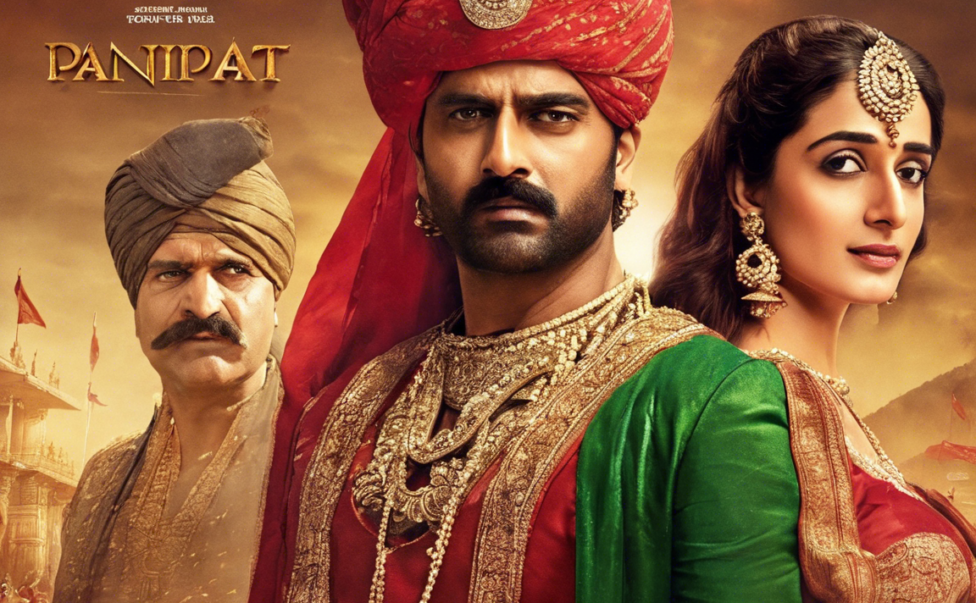Uncover the Epic Tale: Panipat Full Movie Review
Introduction:
The historical drama genre has always been a favorite among movie enthusiasts, offering a glimpse into the past and retelling stories of valor, betrayal, and epic battles. “Panipat”, directed by Ashutosh Gowariker, is a film that delves into the events leading up to the Third Battle of Panipat, fought between the Maratha Empire and the invading forces of Ahmad Shah Durrani, the King of Afghanistan. Set in the 18th century, the movie portrays the fierce battle that took place on January 14, 1761, near the town of Panipat in present-day Haryana, India.
Plot Summary:
The movie opens with the introduction of Sadashiv Rao Bhau, the brave and strategic commander of the Maratha army, who is appointed by the Peshwa to lead the troops against the looming threat of Ahmad Shah Durrani. As tensions escalate between the two powerful empires, the narrative unfolds with intricate details of political alliances, betrayals, and the complexities of war.
Character Development:
The character portrayals in “Panipat” are vivid and well-executed, bringing depth and emotion to the historical figures. Arjun Kapoor shines in his role as Sadashiv Rao Bhau, showcasing the charisma, bravery, and leadership qualities of the Maratha commander. Kriti Sanon delivers a strong performance as Parvati Bai, Sadashiv’s wife, adding a touch of romance and emotional depth to the storyline. Sanjay Dutt’s portrayal of Ahmad Shah Durrani is powerful and menacing, capturing the essence of the formidable Afghan ruler.
Historical Accuracy:
One of the strengths of “Panipat” lies in its attention to historical accuracy. The movie meticulously recreates the 18th-century setting, costumes, and battle scenes, staying true to the historical events that unfolded during the Third Battle of Panipat. The dialogues are crafted with care, reflecting the language and mannerisms of the time period, adding authenticity to the narrative.
Cinematography and Visual Effects:
The cinematography in “Panipat” is visually stunning, capturing the grandeur and scale of the battlefield scenes with precision. The use of wide shots and aerial views enhances the sense of magnitude and chaos during the intense battle sequences. The visual effects are seamlessly integrated into the movie, bringing to life the epic scope of the conflict and the sheer scale of the armies involved.
Musical Score:
The musical score of “Panipat” complements the narrative, evoking the emotions of valor, sacrifice, and tragedy that define the characters and their journey. The background music enhances the intensity of the battle scenes, creating a sense of urgency and suspense as the story reaches its climax.
Critical Reception and Box Office Performance:
Upon its release, “Panipat” received mixed reviews from critics and audiences. While the film was praised for its historical accuracy, performances, and grand scale, some viewers found the pacing to be slow at times. The box office performance of the movie was moderate, falling short of expectations in terms of commercial success.
Conclusion:
In conclusion, “Panipat” is a cinematic portrayal of a pivotal moment in Indian history, bringing to life the courage, sacrifice, and valor of the soldiers who fought in the Third Battle of Panipat. The movie offers a glimpse into a bygone era, weaving together a tapestry of emotions, action, and drama that transports the audience back in time. Despite its flaws, “Panipat” stands as a tribute to the unsung heroes of the past, reminding us of the resilience and spirit of those who shaped the course of history through their bravery and determination.
Frequently Asked Questions (FAQs):
- Is “Panipat” a true story?
-
Yes, “Panipat” is based on the historical events leading up to the Third Battle of Panipat, fought in 1761 between the Maratha Empire and the Afghan forces of Ahmad Shah Durrani.
-
How accurate is the portrayal of the characters in the movie?
-
The movie strives for historical accuracy in its depiction of the key figures involved in the Third Battle of Panipat, capturing their personalities and motivations based on available historical records.
-
What sets “Panipat” apart from other historical dramas?
-
“Panipat” distinguishes itself through its meticulous attention to detail, from costumes to battle formations, striving to recreate the 18th-century setting with authenticity.
-
Are the battle scenes in “Panipat” realistic?
-
The battle scenes in the movie are choreographed with precision and scale, aiming to depict the chaos and intensity of warfare during the 18th century.
-
How did audiences and critics react to “Panipat”?
-
While opinions were divided, “Panipat” received praise for its performances and authenticity, though some reviewers noted pacing issues that affected the overall impact.
-
What can viewers take away from watching “Panipat”?
-
Viewers of “Panipat” can gain insight into a significant chapter of Indian history, appreciating the sacrifices and struggles of those who fought in the Third Battle of Panipat.
-
Is “Panipat” suitable for all audiences?
-
Due to its war-themed content and intense battle sequences, “Panipat” may not be suitable for younger viewers or those who are sensitive to graphic violence.
-
Who are the key historical figures depicted in “Panipat”?
-
The movie features characters such as Sadashiv Rao Bhau, Parvati Bai, Ahmad Shah Durrani, and other prominent figures from the Maratha and Afghan forces involved in the Third Battle of Panipat.
-
Does “Panipat” accurately portray the cultural and social context of the 18th century?
-
While the movie focuses primarily on the military and political aspects of the time period, efforts are made to incorporate cultural elements and societal norms of 18th-century India.
-
What is the significance of the Third Battle of Panipat in Indian history?
- The Third Battle of Panipat is a crucial event that marked a turning point in the decline of the Maratha Empire and had far-reaching consequences for the political landscape of India in the 18th century.

